LASIK technology has gradually evolved significantly over the years, enhancing precision, safety, and patient outcomes. The origin of LASIK is as old as it is traced back to Dr Jose Ignacio Barraquer, a Spanish ophthalmologist who pioneered the idea for the very first time in the 1950s. His idea of reshaping the cornea to correct vision inspired further research by experts, including Dr. Stephen Trokel from the USA, who played a key role in advancing laser vision correction techniques. Dr. Trokel worked on excimer laser technology, which became the basis of modern refractive surgeries like PRK and LASIK.
In the 1980s, researchers developed the concept of reshaping the cornea using a laser, building upon earlier techniques like keratomileusis and photorefractive keratectomy (PRK). Apart from all the above ideas, the credit goes to Dr. Ioannis Pallikaris, a Greek ophthalmologist who successfully performed the LASIK eye surgery for the first time.
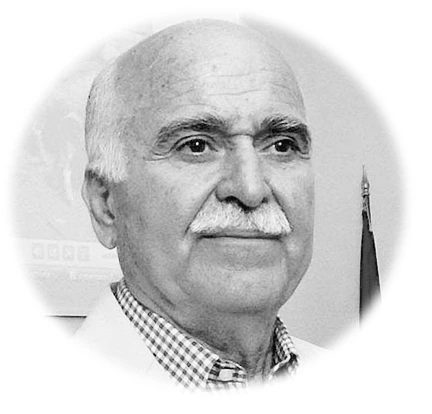
In this article, several of the best and latest LASIK technologies have been compared across different platforms (excimer lasers, femtosecond lasers, and tracking systems), with multiple brands offering variations. The choice depends on factors like eye structure, corneal thickness, and surgeon preference:
1. Femtosecond Lasers (For Bladeless LASIK Flap Creation)

In this procedure, femtosecond lasers create the corneal flap without using a mechanical blade (microkeratome). It uses infrared (IR) light, typically around 1053 nm. Surgeons use it in the first step to create the corneal flap before reshaping. Therefore, the result of femtosecond lasers is more precise and safer than traditional microkeratomes. Details of common technologies related to femtoseconds are discussed in the table below:
| Technology | Manufacturer | Flap Precision | Advantages |
| IntraLase FS | Johnson & Johnson | High precision | Reduces flap complications, customizable thickness |
| Zeiss VisuMax | Carl Zeiss Meditec | Extremely precise | Enables SMILE procedure, gentle on the cornea |
| Ziemer FEMTO LDV | Ziemer Ophthalmic Systems | Ultra-thin flaps | Uses low-energy pulses for less tissue damage |
2. Excimer Lasers (For Corneal Reshaping)
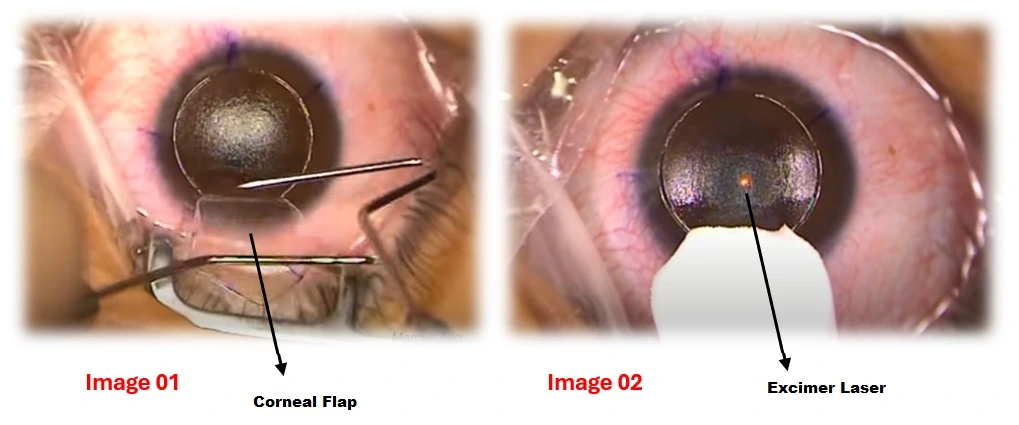
Excimer lasers play a very essential role in LASIK eye surgery. The function of the excimer laser is to reshape the cornea to correct refractive errors. It uses ultraviolet (UV) light, typically around 19 nm. It is used in the second step of LASIK to correct vision after the corneal flap has been created. The result of the excimer laser is highly precise in tissue removal, minimizing thermal damage. Details of common technologies are discussed in the table below:
| Technology | Manufacturer | Features | Advantages |
| VISX Star S4 IR | Johnson & Johnson | Iris recognition, ActiveTrak 3D eye tracking | High precision, reduces night glare |
| Allegretto WaveLight | Alcon | Wavefront optimization, 400Hz repetition rate | Fast treatment time, smooth corneal surface |
| Schwind Amaris | Schwind Eye-Tech Solutions | 7D eye tracking, SmartPulse Technology | High-speed ablation, customized treatments |
| NIDEK EC-5000 | NIDEK | Multi-zone ablation profiles | Suitable for high prescriptions |
| Technolas TENEO 317 | Bausch + Lomb | SmartScan technology, high-speed treatment | Accurate and fast corneal reshaping |
3. Custom LASIK (Wavefront-Guided LASIK)
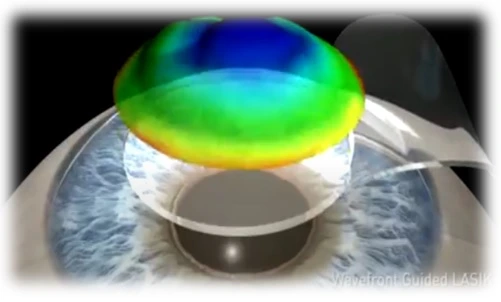
Custom LASIK utilizes advanced mapping technology to tailor laser treatment based on individual eye characteristics:
| Technology | Manufacturer | Features | Best For |
| WaveLight Contoura Vision | Alcon | 22,000 corneal elevation points mapped | Higher-order aberrations, sharper vision |
| VISX CustomVue | Johnson & Johnson | WaveScan digital mapping | Night vision improvement, personalized treatment |
| Schwind Amaris 1050RS | Schwind | 7D eye tracking, high-speed laser | High precision, suitable for thin corneas |
4. Specialized LASIK Technologies
i. Topography-Guided LASIK
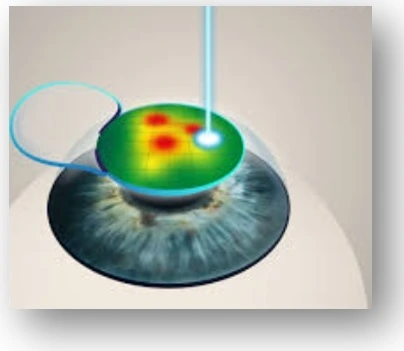
Corrects corneal irregularities based on a topographic scan.
| Technology | Manufacturer | Best For |
| Contoura Vision | Alcon | Irregular corneas, reducing halos and glare |
| Schwind Amaris | Schwind | Complex corneal conditions |
ii. SMILE (Small Incision Lenticule Extraction)
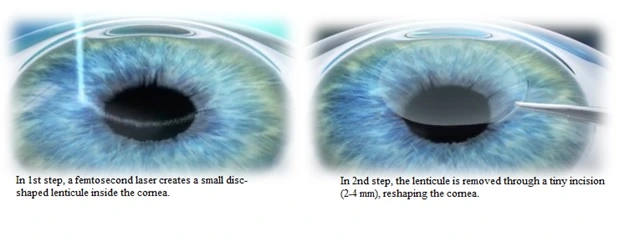
The purpose of the SMILE procedure is to treat myopia (-1.00 to -10.00 D) and astigmatism (up to -5.00 D). It is a minimally invasive alternative to LASIK, avoiding flap creation.
| Technology | Manufacturer | Advantages |
| Zeiss VisuMax | Carl Zeiss Meditec | No flap needed, minimal dry eye risk |
iii. Presby LASIK
Designed to correct presbyopia (age-related near vision loss) using multifocal laser patterns.
| Technology | Manufacturer | Best For |
| Supracor | Bausch + Lomb | Age-related near vision correction |
5. Eye-Tracking & Pupil-Centring Technologies
Enhance LASIK precision by adjusting for eye movements.
| Technology | Manufacturer | Function |
| ActivTrak | VISX Star S4 IR | 3D eye tracking |
| Fast Track | Alcon WaveLight | High-speed movement detection |
| 7D Eye Tracking | Schwind Amaris | Monitors head tilt and pupil shift |
Conclusion:
After a detailed discussion, it might be difficult to consider the best and most relevant LASIK technology. Ultimately, the surgeon has the choice to decide which technology is best according to the patient’s condition. Moreover, the best treatment based on patient needs is discussed here:
- Best overall precision → Alcon WaveLight Contoura Vision (customised treatment)
- Best for thin corneas → Schwind Amaris 1050RS
- Best for minimal dry eye risk → Zeiss VisuMax SMILE
- Best for presbyopia (age-related vision loss) → Supracor Presby LASIK
LASIK technology is still heading towards advancement while remaining the most effective vision correction procedure. Choosing the right technology ensures optimal results.

